Virtual recruitment, i.e., hiring candidates remotely facilitated by technology, isn’t a new phenomenon in the corporate scene. Interestingly, the year when IBM made the first smartphone, the first job board was also launched on a dial-up BBS – that year was 1992. Since then, technological advances have frog leaped over the decades and brought innovations that caused virtual recruiting, as a practice, to expand exponentially.
Today, recruiters can employ a wide variety of tools and applications to manage the entire recruitment cycle online. These virtual recruiting tools are highly capable and can take care of every stage in the recruitment funnel.
Recruiters can use these tools to attract top talent, filter resumes, connect with eligible candidates, conduct interviews and orientation, and take them on virtual tours without the need to meet and engage in face-to-face conversations.
While virtual recruiting has been one of the hiring practices, earlier, most of the recruitments were done via physical means such as career fairs, walk-in or scheduled interviews, and in-person open houses.
However, the onset of the pandemic and the subsequent necessity to operate remotely forced companies and organizations to seek the right candidates virtually.
The past few years have seen a big stratum of employers shifting to virtual recruitment as their sole mode for hiring needs, both as a response to the pandemic and the emergence of online recruiting tools that could cater to every hiring need.
What is Virtual Recruiting?
Virtual recruiting is hiring candidates remotely using technology solutions, without in-person interactions between the recruiter and the candidate. These technology solutions may include video interviewing software, virtual career fairs, and open houses, recruiting chatbots and communication apps like Facebook and Whatsapp, and virtual event software.
All these tools serve different stages in the recruitment funnel and are designed to improve candidate experience and facilitate an effective and efficient recruitment process. Employers must frame the right virtual recruiting strategy to suit their organization’s unique requirements.
This was noticed during the pandemic year when companies used virtual recruiting. By using virtual recruiting, employers could minimize the health hazards for their candidates by limiting face-to-face interaction until the last stage of recruitment or entirely hiring a candidate via the virtual recruitment process.
“In the same way that a hybrid workforce of onsite and remote employees will become the standard, a hybrid hiring process that combines virtual and in-person elements will become the norm.”
~LinkedIn Survey
All over the world, talent acquisition leaders and HR professionals realized the benefits and convenience of using virtual recruitment tools to speed up their hiring and make onboarding potential candidates more cost-effective and quicker.
7 Benefits of Virtual Recruiting
The virtual recruitment process opens up many possibilities and opportunities for employers seeking to hire candidates via remote means. Before investing in the merits of virtual recruiting, it is worth mentioning here that 70% of the global workforce comprises passive talent, which can be nudged, reached, and contacted most naturally via virtual means.
The recruiters have had virtual recruiting tools in the recruitment arsenal for the longest time, either to weed out non-relevant candidates or reach out to remote candidates. As the world becomes more digital, the shift from the physical to the virtual has encompassed the stages in the entire recruitment funnel, and here are a few reasons why.
Some of the benefits of virtual recruiting are as follows:
#1 Cost-effective hiring option
81% of recruiters and talent acquisition professionals say they would continue using virtual recruiting in the future as it is cost-effective, efficient, and time-saving. Virtual recruiting is flexible and can be scaled up or down to suit immediate HR needs.
These virtual recruitment events are less costly than in-person events as there is no need to set up a venue, organize interviews, provide refreshments, etc. Virtual recruiting is more beneficial for firms with more hiring needs.
Check – Virtual Recruitment Event Software
#2 Saves time spent in recruiting
On average, a recruiter spends 1/3rd of their workweek sourcing and screening candidates. Virtual recruiting can help speed up the process by automating manual tasks and streamlining and integrating the multiple stages of the recruitment process.
It shortens the stages by helping the candidate move quickly through the hiring process, saving valuable time and resources. Conversely, the candidates aren’t required to travel or move spaces to appear for the hiring and interview process.
#3 Elevates candidate experience
Stats say that 60% of job seekers and candidates leave a job application midway due to the length and complexity of the process. Also, a suitable candidate is off the market in 10 days.
As such, the time aspect is relevant in improving the overall candidate experience during a recruitment process.
Virtual recruiting provides better communication tools like virtual chat and virtual career fairs where employers and candidates can connect. Virtual recruiting tools also gather analytics and data to analyze and improve the recruitment process and, in turn, make the hiring process a great candidate experience.
#4 Better access to the global candidate pool
Virtual recruiting allows you to overcome the place and geographical barriers of in-person recruiting. It allows you to reach a wider, more diverse talent pool across geographies.
With remote work and hybrid workforce becoming the norm, virtual recruiting will gain even more relevance to sourcing the best candidates from anywhere globally. Candidates, too, can apply to their dream organizations and work remotely without needing to relocate or move countries.
#5 More diverse communication channels
In virtual recruiting, candidates can choose the communication channel that works best for them, whether by text, email, or social media. This flexibility directly contributes to improving the candidate experience.
For employers, the availability of many communication channels allows them to connect and understand the prospective candidate better.
#6 DEI values in the hiring process
DEI, or diversity, equity, and inclusion values are essential for the hiring process. When recruiters use virtual recruitment tools to communicate, they can access a diverse pool of candidates of different races, ethnicities, countries, and gender.
Traditional in-person hiring practices can often unintentionally overlook capable candidates, but virtual recruitment technologies are designed to remove unconscious and conscious bias from the recruitment process.
#7 Optimum Results
While virtual recruiting is on the rise, it isn’t competing against the traditional in-person recruitment methods. Instead, the virtual recruitment process will supplement the in-person hiring to reap the best results. The optimized processes would not only ensure cost and time savings but also gather the best talent and positively impact the organization in the long run.
4 Virtual Recruitment Strategies
When recruiters understand the hiring needs well before planning out the virtual recruitment strategies, the entire recruitment process gets optimized, and the hiring cycle can be shortened by up to 60%.
The essential steps in designing the right virtual recruitment strategy for talent acquisition professionals and HR leaders include the following:
#1 Understanding the primary hiring goals
The first step in planning any strategy involves knowing the primary goals and the requirements thereon. While designing a virtual recruitment strategy, recruiters must consider the number of candidates required per role, the duration of the selection process, the level of diversity desired, and identify the key goals.
#2 Select the right technology to augment the hiring process
Once done, the next step is looking for the right technology and software tools to execute the strategy. These tools fall under many categories, including social networks and management platforms, chatbots, text and email, career fairs, virtual interviewing tools, referral tools, and programmatic advertising.
#3 Finalize the tool & vendor
Next, research and select the right vendor from among the many available in the market. Have a budget planned for the same and follow well-laid-out criteria for finding the best fit for your firm.
#4 Put the virtual hiring team together
After tools and vendors are finalized, there is the need to select the members of the recruiting team. Each tool has different requirements. Hence, each team and event should be tailored to meet these needs and produce the best results.
Virtual Recruiting Events
There are several types of virtual recruiting events with different themes and objectives. Some of them are as follows:
#1 Educational Events
These events focus more on spreading awareness about the brand among job seekers. They aim to build trust via resume review sessions, interview-related advice, tools, and resources for job seekers to help them improve their prospects.
#2 Informational Events
These events introduce the brand, company culture, and values to the job seekers to attract them before they even seek job applications there. Such events may involve virtual meetups from founders or top executives, virtual tours, company history, testimonials, etc.
#3 Pre-screening Events
Pre-Screening events such as a career fair helps recruiters filter qualified candidates from a pool of candidates via assessment tools. These events are good for roles that have a high-volume hiring process.
#4 Hiring Interviews
After pre-screening, the recruiters may opt for virtual interview sessions with the screened candidates, select them, and offer them job letters on the spot.
Limitations of Virtual Recruiting
Virtual recruiting comes with many benefits but has its own limitations, which are more like challenges that can be overcome with proper thought and approach.
- A virtual recruiting process may not be appropriate to introduce the candidate to the company culture. The candidate may get a misaligned view of the organization and find that the workplace doesn’t align with their expectations.
- Candidate experience may get hampered if the virtual recruiting process and interview give a one-way channel cum detached scope of things.
Wrap Up
Virtual recruiting has evolved hiring benchmarks and best practices and is set to radically transform how recruiters and potential candidates see the hiring process. With sophisticated technological tools at their disposal, recruiters are finding more time to shortlist better candidates suited for the given role, connect with them, and establish a rapport even before the candidate steps in as an employee of the company.
As the future of work looks towards more hybrid work models, dispersed teams, and remote workers, embracing the virtual shift has become even more pertinent for recruiters to stay relevant and attractive to prospective clients.
Going forward, virtual recruiting, having earned its place in the talent acquisition strategies, will continue to be employed alongside conventional in-person recruiting processes.
FAQs on Virtual Recruiting
Why is virtual recruitment considered important?
Virtual recruitment opens up the scope for recruiting qualified candidates from across geographies by providing a wider talent pool, better communication resources and saving time and resources the talent acquisition team spent on manual recruiting tasks.
How do recruiters engage with candidates virtually?
Recruiters and talent acquisition professionals can use advanced technological tools and virtual recruiting applications like virtual job fairs, chatbots, video interviews, virtual tours, email, text, and other messaging apps to engage with candidates virtually.
What is an online recruitment platform?
An online recruitment platform is an online software or a virtual recruiting program that helps recruiters to sift through candidate profiles, source candidates, and select qualified candidates while managing the entire recruitment process.
How can recruiters improve online recruitment?
Online or virtual recruitment can be improved by removing bias and employing AI-based software that helps to boost productivity and enhance the candidate experience during the recruitment process.
Why do employers find virtual interviews useful?
Virtual interviews are cost-effective and time-saving. These interviews help employers to screen and test candidates without having them travel.
On the other hand, using a simple video conferencing tool for these interviews helps interviewers assess the candidate’s worth without the need to set up venues or schedule interviews. The candidates can select their desired slots in a calendar, and the employer connects with the candidate as and when dedicated.




